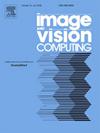剂量网:用于放疗计划的腮腺变形剂量自适应预测
IF 4.2
3区 计算机科学
Q2 COMPUTER SCIENCE, ARTIFICIAL INTELLIGENCE
引用次数: 0
摘要
放射治疗的鼻咽癌患者中,有相当数量的患者发生放射引起的解剖变形引起的腮腺毒性。PGs变形的早期预测至关重要,因为它可以促进治疗计划的设计,以减少自适应放疗工作流程中辐射引起的解剖变化。以前的研究使用CT图像来模拟放射治疗中的解剖变化。然而,他们没有考虑到pg所接受的辐射剂量,这与pg的体积变化有关,并可能影响解剖变异。为了解决这个问题,我们提出了剂量自适应pg变形预测深度神经网络DoseNet,它利用辐射剂量和CT图像来生成适应剂量变化的不同解剖预测。具体而言,我们采用分次剂量输入和多尺度交叉关注的方法,加强了pg解剖与pg所受剂量的整合,提出了一种新的数据增强方法,弥补了辐射剂量数据分布偏态的缺点。此外,为了帮助设计改进的治疗方案,开发了一种称为剂量体积变化(DVV)曲线的新度量,以可视化预测的体积变化与pg的剂量变化有关。我们在一家合作医院收集的数据集上验证了我们方法的有效性。实验结果表明,所提出的DoseNet在数据集上的性能优于目前的方法,Dice系数为82.2%,相对体积差为12.2%。代码可在https://github.com/mkdermo/DoseNet上获得。本文章由计算机程序翻译,如有差异,请以英文原文为准。
DoseNet: Dose-adaptive prediction of the parotid glands deformation for radiotherapy planning
Parotid glands (PGs) toxicity caused by radiation-induced anatomy deformation occurs among a significant amount of patients with nasopharyngeal carcinoma treated with radiotherapy. Early prediction of PGs deformation is critical, as it can facilitate the design of treatment plans to reduce radiation-induced anatomical change in an adaptive radiotherapy workflow. Previous studies used CT images to model anatomical variation in radiotherapy. However, they did not consider the radiation dose received by the PGs which is correlated to the PGs volumetric change and can influence the anatomical variation. To address this issue, we propose DoseNet, a dose-adaptive PGs deformation prediction deep neural network, which utilizes the radiation dose and CT images to generate different anatomy predictions accommodating to the changing dose. Specifically, we use parted dose input and multi-scale cross attention to reinforce the integration of PGs anatomy and the dose received by PGs, and present a novel data augmentation method to remedy the shortcoming of the skewed data distribution of the radiation dose. Besides, to help design improved treatment plans, a novel metric termed dose volume variation (DVV) curve is developed to visualize the predicted volumetric change in respect to the dose variation of the PGs. We verify the effectiveness of our method on a dataset collected from a collaborative hospital. The experiment results show the proposed DoseNet outperforms the state-of-the-arts on the dataset and attains a Dice coefficient of 82.2% and a relative volume difference of 12.2%. The code is available at https://github.com/mkdermo/DoseNet.
求助全文
通过发布文献求助,成功后即可免费获取论文全文。
去求助
来源期刊

Image and Vision Computing
工程技术-工程:电子与电气
CiteScore
8.50
自引率
8.50%
发文量
143
审稿时长
7.8 months
期刊介绍:
Image and Vision Computing has as a primary aim the provision of an effective medium of interchange for the results of high quality theoretical and applied research fundamental to all aspects of image interpretation and computer vision. The journal publishes work that proposes new image interpretation and computer vision methodology or addresses the application of such methods to real world scenes. It seeks to strengthen a deeper understanding in the discipline by encouraging the quantitative comparison and performance evaluation of the proposed methodology. The coverage includes: image interpretation, scene modelling, object recognition and tracking, shape analysis, monitoring and surveillance, active vision and robotic systems, SLAM, biologically-inspired computer vision, motion analysis, stereo vision, document image understanding, character and handwritten text recognition, face and gesture recognition, biometrics, vision-based human-computer interaction, human activity and behavior understanding, data fusion from multiple sensor inputs, image databases.
 求助内容:
求助内容: 应助结果提醒方式:
应助结果提醒方式:


